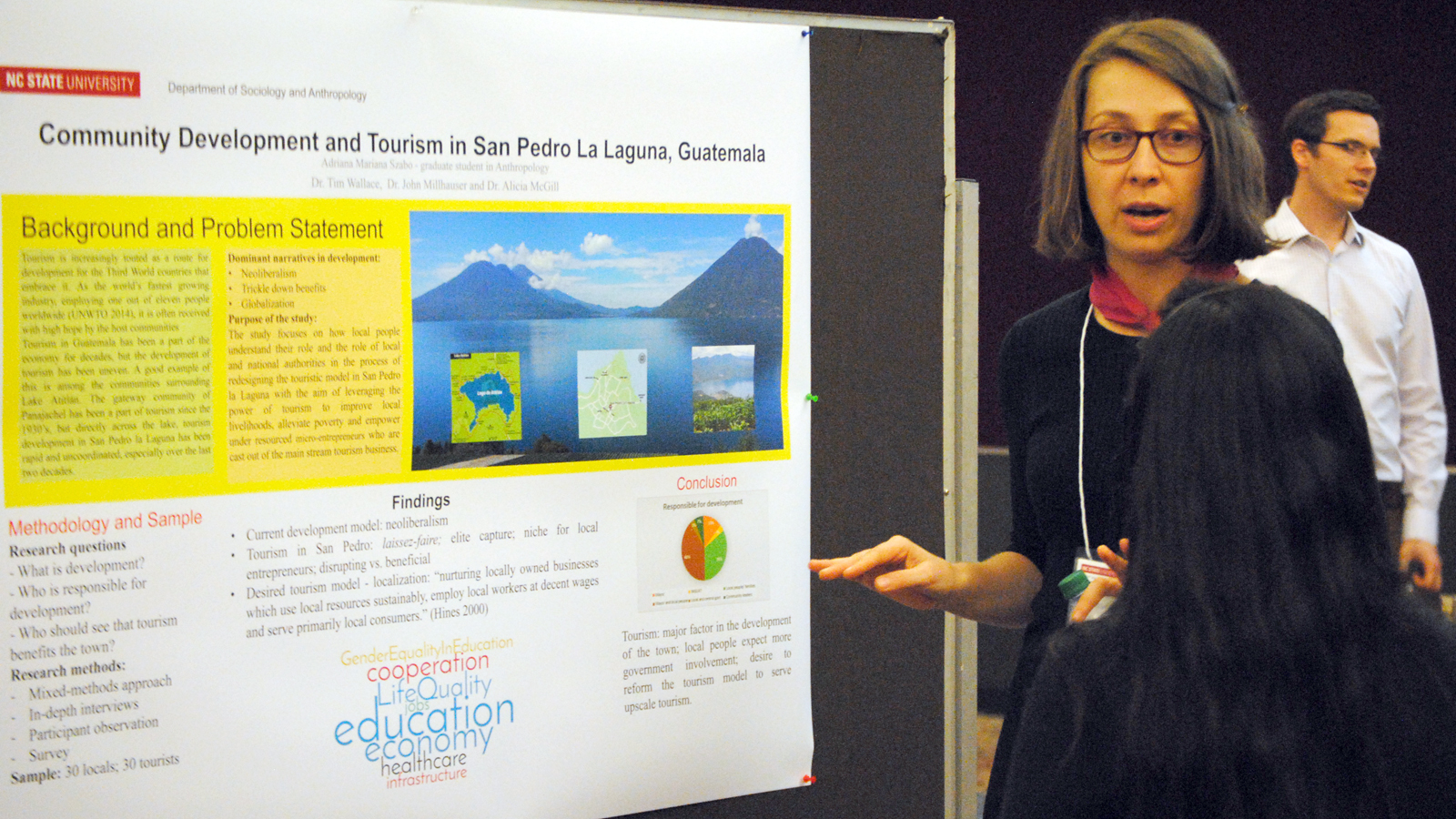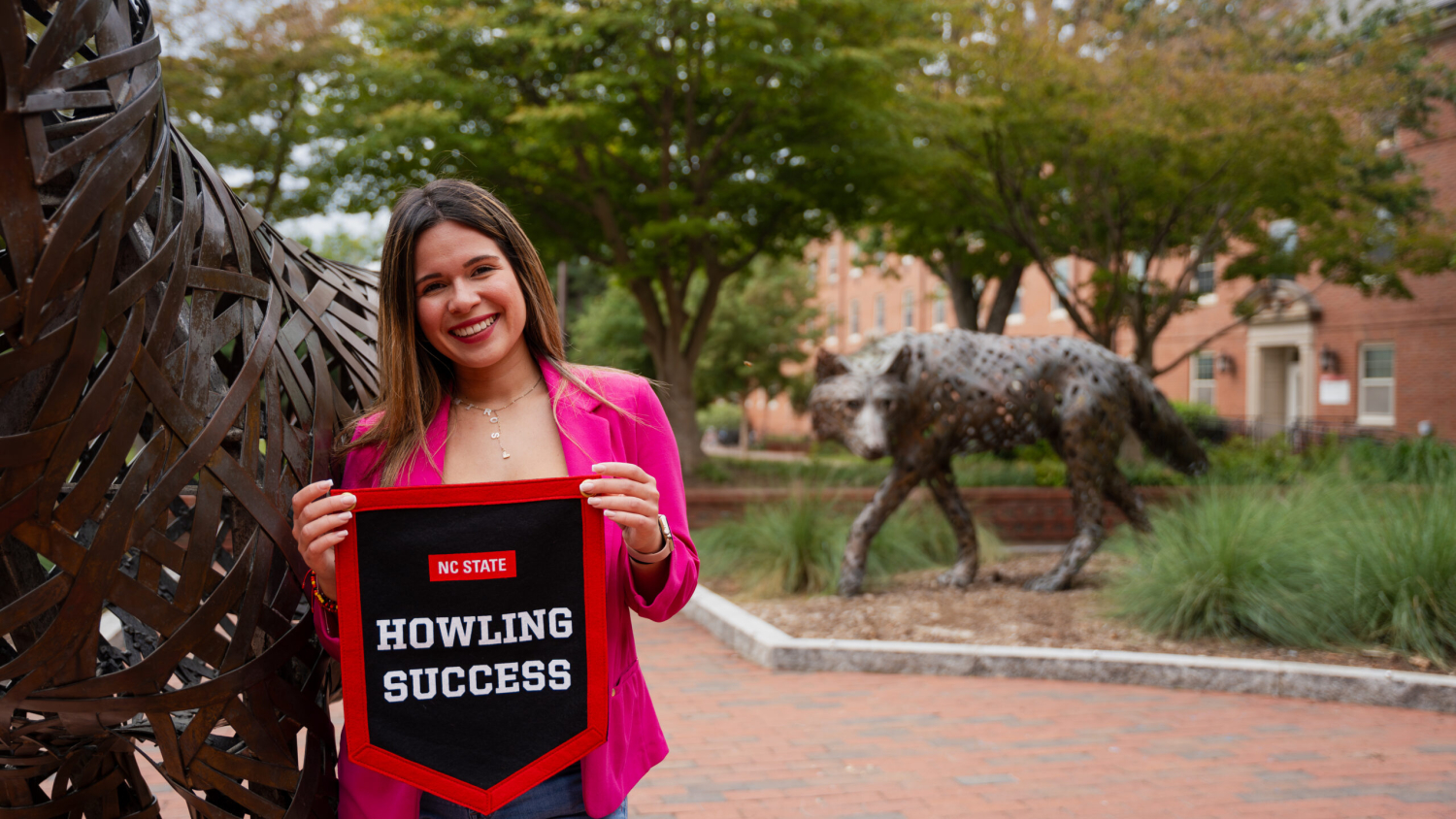Study Highlights Local Voices on Tourism Development in Guatemala

Located in the highlands of the Sierra Madre mountains, Lake Atitlán is perhaps Guatemala’s most significant tourism draw.
But while some cities surrounding the lake have steadily benefitted from its frequent visitors, other towns haven’t seen the same rate of development.
In the summer of 2014, NC State graduate student Adriana Szabo spent eight weeks studying the uneven trend in San Pedro La Laguna, a town on the shore of Lake Atitlán. Her research, rooted in an analysis of ethnographic research she collected during her trip, raises up the voices of locals who desire changes to the current tourism development model.
Szabo, who is pursuing a master’s degree in anthropology, presented her findings as a poster at the 2016 NC State Graduate Research Symposium. In addition, she previously presented her work as a paper at the 2015 Society for Applied Anthropology Annual Meeting in Pittsburgh. We caught up with Szabo about her study and plans for the future.

Q: How did you come to study tourism in Guatemala?
A: I am really interested in community development. I have several years of development work experience on different continents, and as I was preparing for grad school, I enrolled in the NC State Ethnographic Field School in Guatemala to do research for my thesis. Dr. Tim Wallace, the director of the field school, is my adviser and after we discussed my interests, he suggested I could look at tourism as well, since the area where we conducted research, Lake Atitlán, is a major touristic site.
Q: What were you hoping to find? How did you collect your data?
A: Building on my experience as a development worker, I wanted to understand the emic perspective, or the perspective of local people, on development and tourism. I am very familiar with development policies and models around the world, some more successful than others, and I wanted to understand where the narrative of local people fits in these dominant development narratives. I used a mixed methods approach in collecting my data, both qualitative and quantitative. I did in-depth interviews with local people, a survey with tourists and complemented this data with participant observation.
Q: What did you find?
A: My data indicates that local people in San Pedro La Laguna embrace different development narratives. On the one hand, they see themselves as key actors in the development of their own town, but they expect their local and central government to be more heavily involved in regulating tourism so that the larger community benefits from the revenues generated by tourism.
On the other hand, my data suggests that the power relations in the town are not really balanced. The people I talked to pointed to the lack of community participation in development decision-making due to a governing model that did not consult with the community at all.
Pedranos seem to both embrace and reject the neoliberal theory of economic development, which states that economic growth is the key to development. The Pedranos I interviewed believe that access to education is more important than economic growth, although improving the economy was the second most important path to development in their opinion. Surprisingly, for me at least, is the fact that not even one person mentioned nongovernmental organizations (NGOs) as agents of development.

Q: What is the significance of these findings?
A: My data indicates that the current development model is very much top-down and that local people believe there is a need for changing the current development model to include a bottom-up approach. However, additional research is necessary, and I believe my study could be the first step of a longitudinal research project.
Q: How have professors or your experiences at NC State helped prepare you for research like this? Have you worked at all with the People-First Tourism project or the P1t Lab?
A: The research I did in San Pedro La Laguna benefited from the on-site training I received from Dr. Wallace and Dr. Carla Pezzia, the former co-director of NC State’s Ethnographic Field School in Guatemala and an anthropology professor at the University of Dallas. I received weekly feedback on my field notes, and it was really beneficial to have them there during the research and be able to discuss any doubts I had on the spot.
I already knew about People-First Tourism at the time of my study in Guatemala, as Dr. Duarte Morais, one of the co-founders of the project, worked with my husband, who is now his advisee, in Brazil at the end of 2012 to create a P1T network there. At the time, my husband and I worked with a grassroots NGO in Northeast Bahia, Brazil.
This semester (Spring 2016), I became more involved with the P1T Lab, as I am taking Dr. Morais’ class on Tourism, Community Health and Sustainability. One of my tasks is to follow up with a local entrepreneur as part of a longitudinal study of the work and effects of P1T.
Q: What’s next for you after grad school?
A: I am about to graduate with an M.A. in Anthropology and a minor in history and I plan to go back to Guatemala in May. In the meantime, I am also preparing to apply for a Ph.D. program in anthropology.


